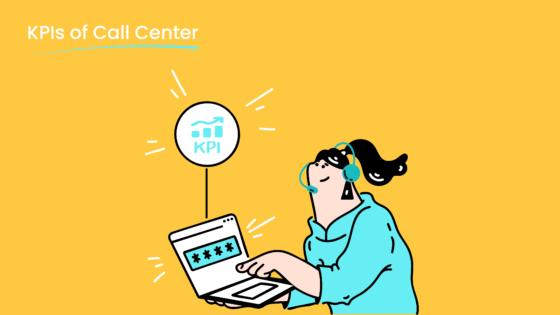Call Centre Quality Assurance Methods Pros and Cons

What are the pros and cons of different quality assurance methods in a call center? Choosing the right process shapes call centre quality and impacts customer satisfaction. Sobot helps businesses by offering advanced tools like Sobot AI and the Sobot call center. Every company has unique needs. Leaders should review solutions carefully to find the best fit.
Call Centre Quality Overview
What Is Quality Assurance?
Quality assurance in a call center refers to the systematic process of monitoring, evaluating, and improving customer interactions. This process ensures that every call meets the organization’s standards for service quality. Teams use call center quality assurance to review agent performance, identify training needs, and maintain consistency. Companies often use scorecards, checklists, and analytics tools to measure call centre quality. These tools help managers track key metrics and spot trends that affect service quality.
Quality assurance is not just about finding mistakes. It helps teams understand what works well and what needs improvement.

Sobot provides advanced solutions for call center quality assurance. Its Voice/Call Center platform offers real-time monitoring, analytics, and AI-powered tools. These features support businesses in maintaining high service quality and improving customer satisfaction.
Why It Matters
Call centre quality plays a vital role in shaping customer experiences. High service quality leads to satisfied customers, repeat business, and positive reviews. Poor call center quality assurance can result in lost customers and damage to a company’s reputation. Quality assurance helps organizations set clear expectations for agents and ensures that every customer receives consistent service.
- Companies that invest in quality assurance see improvements in:
- Customer satisfaction scores
- First-call resolution rates
- Agent performance and morale
Sobot’s solutions help businesses achieve these goals by providing unified workspaces, smart call routing, and data-driven insights. These tools make it easier to maintain service quality across all channels. By focusing on call centre quality, organizations can build trust and loyalty with their customers.
Manual Monitoring

Process
Manual monitoring stands as one of the oldest methods for quality assurance in call centers. Supervisors or quality analysts listen to recorded or live customer service calls. They use scorecards and checklists to evaluate agent performance, communication skills, and adherence to company policies. Analysts often select random samples of calls for review. They may also focus on specific calls flagged by customers or system alerts. This process helps teams identify areas for improvement and training.
Tip: Regular calibration sessions among supervisors ensure consistent scoring and fair feedback for agents.
Pros
Manual monitoring offers several advantages for quality assurance:
- Human evaluators can detect subtle cues in tone, empathy, and problem-solving that automated systems may miss.
- Supervisors provide immediate feedback and coaching to agents after reviewing calls.
- Teams can tailor evaluation criteria to specific business needs or campaign goals.
- Manual call monitoring allows for flexible adjustments based on real-time customer feedback.
A study by SQM Group found that organizations using manual monitoring improved first-call resolution rates by up to 15% (source).
Cons
Manual monitoring also presents some challenges:
- The process requires significant time and labor, especially for large volumes of customer service calls.
- Human bias may affect scoring consistency and objectivity.
- Limited sample sizes can lead to missed trends or issues in overall call quality.
- Scaling manual quality assurance becomes difficult as call center operations grow.
| Challenge | Impact |
|---|---|
| Time-consuming | Higher operational costs |
| Subjective scores | Inconsistent agent feedback |
| Small samples | Incomplete quality insights |
Managers must balance the benefits of manual call monitoring with its resource demands. Many organizations combine manual and automated methods to optimize quality assurance.
Automated and AI-Powered QA
How It Works
Automated and AI-powered quality assurance uses advanced technology to evaluate customer interactions. Software records and analyzes calls, chats, and messages. AI algorithms review conversations for compliance, sentiment, and service quality. Sobot’s Voice/Call Center platform features an AI-powered Voicebot that recognizes customer intent and provides intelligent responses. Real-time monitoring allows supervisors to track calls as they happen. The system collects data and generates reports for continuous improvement. Sobot’s omnichannel solution integrates automation across voice, chat, and social media, making quality management software more effective.
AI-powered QA tools can process thousands of interactions quickly, helping teams spot trends and issues that manual monitoring might miss.
Benefits
Automated QA offers several advantages for call centers. AI can analyze large volumes of data, providing insights into service quality and agent performance. Real-time monitoring helps managers respond to problems immediately. Automated systems reduce human bias and improve scoring consistency. Sobot’s Voice/Call Center uses analytics to identify training needs and track key metrics. Quality management software supports continuous improvement by highlighting areas for coaching and development. Omnichannel integration ensures that every customer interaction meets high standards, no matter the channel.
| Benefit | Description |
|---|---|
| Speed | Reviews thousands of calls in minutes |
| Consistency | Delivers objective scoring |
| Scalability | Handles growth without extra staff |
| Data-driven insights | Improves service quality and efficiency |
Limitations
Automated and AI-powered QA has some limitations. AI may miss subtle cues in tone or empathy that affect service quality. Systems require regular updates to stay accurate. Some quality management software may not capture complex customer needs. Teams must combine automated tools with human oversight for best results. Continuous improvement depends on reviewing both automated reports and agent feedback. Sobot’s omnichannel solution helps balance automation with personalized service, supporting high standards in every interaction.
Customer Feedback Methods

Types
Call centers use several customer feedback methods to measure service quality and improve the customer experience. Common types include post-call surveys, email questionnaires, SMS polls, and online review platforms. Some organizations collect feedback through social media or direct interviews. Advanced systems, such as Sobot’s omnichannel solution, automate feedback collection across channels and use AI to analyze responses. These methods help companies understand each stage of the customer journey and identify areas for improvement.
Strengths
Customer feedback methods play a crucial role in quality assurance. They provide direct insights into customer experience and satisfaction. According to Gartner, 43% of product managers in fast-growing companies actively collect and analyze customer feedback data (source). McKinsey reports that systematic feedback analysis can boost profitability by 20% to 40% (source). AI-powered tools, like those in Sobot’s platform, automate sentiment analysis and highlight pain points in real time. These systems enable managers to adjust processes quickly, improve agent coaching, and enhance customer satisfaction. Feedback methods also strengthen loyalty by showing customers their opinions matter throughout their journey.
Tip: Real-time dashboards allow managers to respond immediately to service quality issues, increasing customer satisfaction and retention.
| Benefit | Impact on Call Center Quality |
|---|---|
| Identifies training needs | Improves agent performance |
| Promotes prompt issue resolution | Boosts customer satisfaction |
| Supports loyalty | Builds long-term relationships |
Weaknesses
Customer feedback methods have limitations. Feedback often lacks detail, making it hard to pinpoint specific problems. Too much data can overwhelm managers, leading to decision fatigue. Continuous monitoring may affect agent morale if feedback is not managed carefully. Some feedback is generic or vague, which limits its usefulness for quality assurance. Excessive data collection without proper analysis can reduce the effectiveness of the process. Relying only on customer feedback may not capture every aspect of the customer experience or journey, so combining it with other quality assurance methods is essential.
- Feedback may lack actionable insights.
- Data overload can hinder decision-making.
- Negative feedback, if not handled sensitively, may lower agent motivation.
Peer and Self-Assessment
Approach
Peer and self-assessment methods allow call center agents to evaluate their own performance or review the work of their colleagues. In peer assessment, agents listen to recorded calls or observe live interactions, then provide structured feedback using scorecards or checklists. Self-assessment encourages agents to reflect on their own calls, identify strengths, and recognize areas for improvement. Many organizations combine these approaches with regular coaching sessions. Sobot’s unified workspace supports peer and self-assessment by providing easy access to call recordings and performance analytics.
Agents who participate in peer and self-assessment often develop a deeper understanding of quality assurance standards.
Advantages
Peer and self-assessment methods offer several benefits for call centers:
- Agents gain ownership of their development and become more engaged in the quality assurance process.
- Teams foster a culture of continuous improvement and collaboration.
- Peer reviews can reveal unique insights that supervisors may overlook.
- Self-assessment helps agents recognize patterns in customer feedback and adjust their approach.
A report from ContactBabel found that 62% of contact centers use peer or self-assessment as part of their quality assurance strategy (source). These methods often lead to higher agent morale and improved customer feedback scores.
| Advantage | Description |
|---|---|
| Increased engagement | Agents take responsibility for improvement |
| Enhanced collaboration | Teams share best practices |
| Better customer feedback | Agents respond proactively to issues |
Drawbacks
Peer and self-assessment methods have some limitations. Agents may lack objectivity when reviewing their own or colleagues’ calls. Bias can affect scoring and feedback, reducing the effectiveness of quality assurance. Some agents may feel uncomfortable critiquing peers, which can impact team dynamics. Without proper training, feedback may be inconsistent or incomplete. These methods work best when combined with supervisor oversight and structured guidelines.
Tip: Regular calibration and training help ensure peer and self-assessment support overall quality assurance goals.
Hybrid Quality Assurance Methods
Combining Approaches
Hybrid quality assurance methods blend manual, automated, and feedback-based strategies to improve service quality in call centers. Teams use AI-powered tools to analyze every customer interaction, flagging important moments and potential issues. Human evaluators then review these flagged calls, focusing on skills like empathy and problem-solving. Manual sampling targets calls with long durations or low satisfaction scores. Feedback is delivered quickly, with agents involved in designing scorecards for clarity. Regular calibration sessions help maintain fairness and consistency.
- AI reviews 100% of calls, spotting trends and compliance risks.
- Human experts provide context and deeper insights.
- Targeted manual checks address specific service quality concerns.
- Prompt, constructive feedback supports agent growth.
- Calibration ensures everyone understands quality standards.
This approach creates a cycle of continuous improvement, combining the scale of automation with the understanding of human judgment. It helps call centers boost agent performance and deliver a better customer experience.
Sobot’s Omnichannel Example
Sobot’s omnichannel solution demonstrates hybrid quality assurance in action. The platform integrates AI-driven automation with human oversight across voice, chat, and social media channels. For example, Weee!, America’s largest online Asian supermarket, used Sobot’s voice product to overcome challenges like inflexible IVR and language barriers. Sobot’s system provided a flexible IVR, multilingual support, and a unified workspace for agents. AI-powered tools analyzed calls and flagged issues, while supervisors reviewed complex cases. This hybrid method led to a 20% increase in agent efficiency and a 50% reduction in resolution time. Customer satisfaction reached 96%, showing the impact of combining technology and human expertise (Sobot Weee! Case Study).
Sobot’s omnichannel customer experience platform ensures consistent service quality across all channels, helping businesses adapt to changing customer needs.
Pros and Cons
| Aspect | Pros | Cons |
|---|---|---|
| Test Coverage | Covers all areas by combining manual and automated reviews | Selecting the right tasks for automation requires careful planning |
| Execution Speed | Automation speeds up repetitive tasks | Managing both manual and automated processes can be complex |
| Accuracy | Reduces human error, ensures consistent results | Initial setup for automation can require significant investment |
| Adaptability | Adjusts easily to new requirements and feedback | Synchronization between teams may present challenges |
| Cost Efficiency | Lowers long-term costs by automating routine checks | Tool compatibility must be managed carefully |
Hybrid quality assurance methods help call centers deliver high service quality and a seamless customer experience. By combining automation and human insight, businesses can adapt quickly and maintain high standards.
Call Center Quality Assurance Comparison
Table Summary
The following table compares the main call center quality assurance methods. Each method impacts service quality, efficiency, and coverage in different ways. Sobot’s solutions, such as the Voice/Call Center and omnichannel platform, support several of these approaches for better results.
| Method | Service Quality Impact | Efficiency | Coverage | Best Use Case |
|---|---|---|---|---|
| Manual Monitoring | High (human insight) | Low (time-heavy) | Limited samples | Small teams, complex customer interactions |
| Automated/AI-Powered | Consistent, scalable | High | Full (all calls) | Large centers, high call volumes |
| Customer Feedback | Direct from users | Moderate | Varies | Measuring satisfaction, spotting trends |
| Peer/Self-Assessment | Improves engagement | Moderate | Selective | Agent development, team building |
| Hybrid (e.g., Sobot) | Balanced, adaptive | High | Comprehensive | Growing centers, omnichannel environments |
Note: Sobot’s hybrid approach, as seen with Weee!, combines automation and human review to boost agent efficiency and reduce resolution time. This method helps maintain high service quality across all channels.
Key Insights
Call center quality assurance shapes every customer interaction. Manual monitoring offers deep insights but struggles to scale. Automated and AI-powered QA, like Sobot’s Voice/Call Center, reviews every call and delivers consistent results. Customer feedback methods reveal how customers feel about service quality, but may lack detail. Peer and self-assessment build team skills and morale, though they need clear guidelines. Hybrid methods, supported by Sobot’s omnichannel solution, combine the strengths of each approach. This ensures high service quality, efficiency, and adaptability.
Sobot’s platform helps businesses achieve better call centre quality by integrating real-time monitoring, analytics, and AI-powered tools. Companies can match their quality assurance strategy to their needs, improving both agent performance and customer satisfaction. For more on hybrid QA in action, see the Weee! case study.
Choosing the Right Quality Assurance Method
Factors to Consider
Selecting the right quality assurance method shapes the customer experience and drives continuous improvement in call centers. Leaders must evaluate several factors before making a decision. The volume of customer interactions influences the choice between manual and automated approaches. Teams should assess the complexity of customer inquiries and the skills required for agents. Budget constraints and available technology also play a role. Companies must consider how each method supports customer satisfaction and loyalty throughout the journey.
Tip: Organizations that prioritize continuous improvement often achieve higher customer satisfaction and build stronger loyalty.
A table can help managers compare key factors:
| Factor | Impact on QA Method Selection |
|---|---|
| Call Volume | Determines scalability needs |
| Inquiry Complexity | Influences need for human oversight |
| Technology | Enables automation and analytics |
| Budget | Limits options for implementation |
| Team Skills | Guides training and coaching efforts |
Continuous improvement depends on regular evaluation of these factors. Businesses that align their quality assurance strategy with their goals see better customer satisfaction and loyalty.
Matching to Business Needs
Every organization has unique needs along the customer journey. Retailers may focus on fast responses, while financial services require strict compliance. Sobot’s omnichannel solution adapts to different industries by integrating AI-powered tools and unified workspaces. Companies should match their quality assurance method to their business size, customer expectations, and desired outcomes. Automated systems suit high-volume environments, while hybrid approaches offer flexibility for growing teams.
Continuous improvement remains essential for maintaining high standards. Leaders must review feedback, monitor performance, and adjust processes to enhance customer satisfaction and loyalty. Sobot’s Voice/Call Center provides real-time monitoring and analytics, supporting organizations in their pursuit of excellence. By choosing a method that fits their journey, businesses can deliver superior customer experience and foster lasting loyalty.
Call centre quality assurance methods each offer unique strengths and challenges. Manual monitoring provides deep insight but requires time. Automated and AI-powered QA delivers speed and consistency. Customer feedback reveals satisfaction levels. Peer and self-assessment build engagement. Hybrid approaches combine these benefits for comprehensive coverage. Sobot’s Voice/Call Center enhances call centre quality by offering:
- Intelligent IVR for efficient call routing
- AI-powered Voicebot to reduce inbound volume
- Unified workspace for seamless data access
- Real-time monitoring and analytics
- Global scalability and secure integration
Companies should match QA strategies to their goals and use this comparison to guide decisions.
FAQ
What is the main goal of call center quality assurance?
The main goal is to ensure every customer interaction meets company standards. Quality assurance helps teams improve service, boost customer satisfaction, and identify training needs.
How does Sobot support call center quality assurance?
Sobot provides an all-in-one contact center solution. The platform offers real-time monitoring, AI-powered Voicebot, analytics, and a unified workspace. These features help businesses track performance and maintain high service quality.
Can automated quality assurance replace manual monitoring?
Automated tools analyze large volumes of calls quickly. However, human review remains important for understanding tone and empathy. Many call centers use both methods for the best results.
Why should companies consider a hybrid quality assurance approach?
A hybrid approach combines automation and human insight. This method covers more interactions, improves accuracy, and adapts to changing business needs. Sobot’s omnichannel solution supports hybrid quality assurance for better customer experiences.
What industries benefit most from Sobot’s call center solutions?
Sobot serves retail, finance, gaming, education, and enterprise services. Companies in these industries use Sobot to unify customer contact, improve efficiency, and deliver consistent service across all channels.
